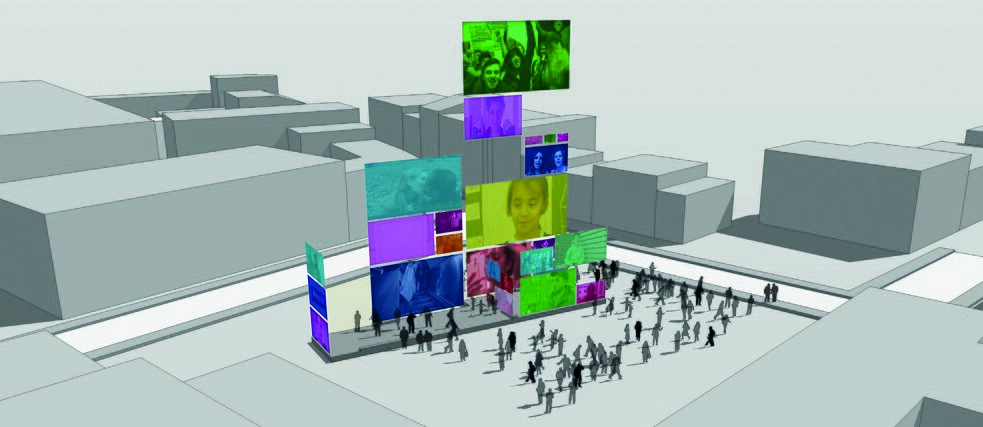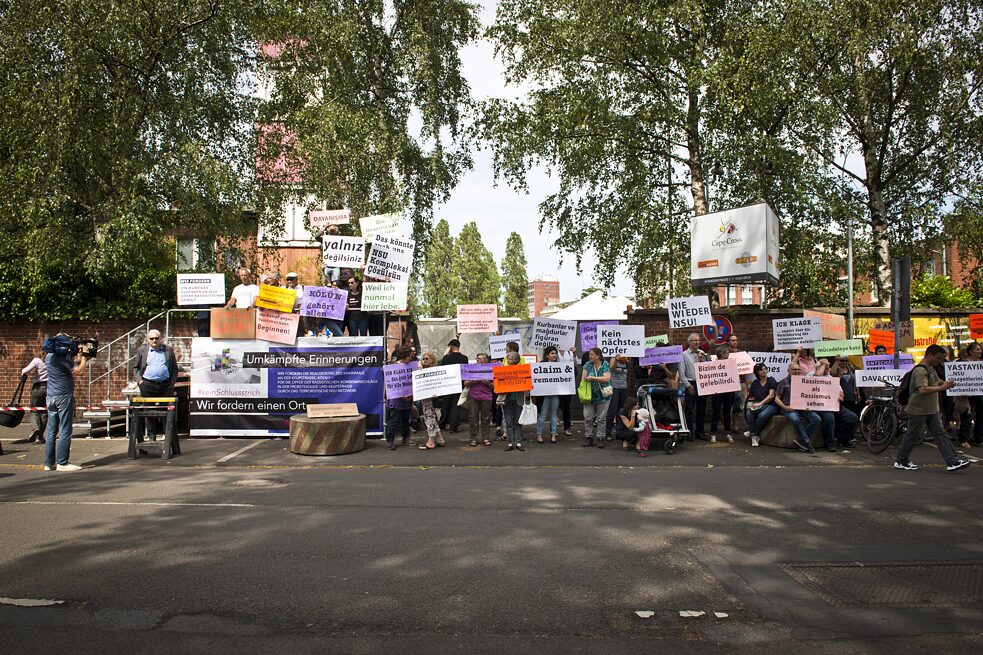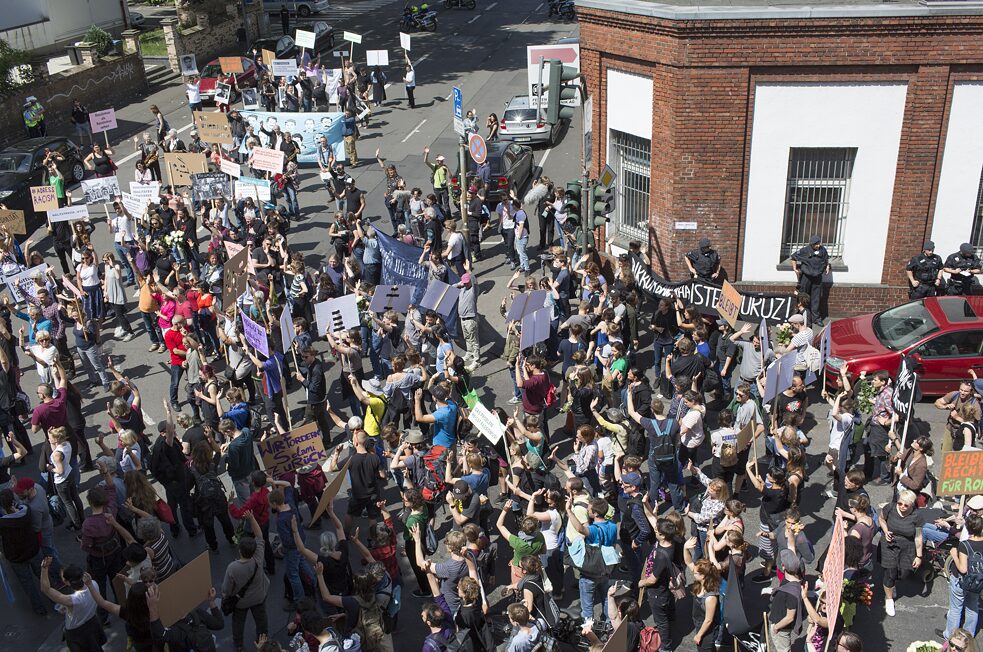Anti-racist memorial in Cologne
Radical Listening

Ulf Aminde works as an artist in solidarity with people who want to realize the anti-racist memorial Herkesin Meydanı – Platz für Alle (Everyone’s Square). The memorial will have physical and digital components and is intended to commemorate the bomb attacks carried out by the National Socialist Underground in Cologne (in 2001 in Probsteigasse and 2004 in Keupstraße).
By Ulf Aminde
As a counterposition to the racist suspicions against migrants following the second bomb attack the memorial is based on many conversations with residents and initiatives from the neighborhood and combines the concept of memory with a future that needs to be constantly (visually) renewed by a ‘Society of the Many’.
Radical listening
Listening is the basic attitude that defines the concept of the Anti-Racist Memorial in Keupstrasse, which the city of Cologne (Germany) and a few investors have successfully prevented for years. Those affected by racist violence and marginalization will have their say in the memorial, which is intended to become a place of learning and commemoration that shares their perspectives. The memorial will be continually expanded and supplemented. It will be as versatile as a society, in which migration has arrived as a driving force. Herkesin Meydanı - Platz für Alle, Keupstraße | © Dörthe Boxberg
Herkesin Meydanı - Platz für Alle, Keupstraße | © Dörthe Boxberg
Places to listen
Radical listening ultimately led me to Monument Lab and the related project “Shaping the Past,” an association of anti-racist artists, designers, activists from Canada, Mexico, the USA, and Germany, most of them of color. In our meetings they have generously shared their experiences of anti-racist struggles and debates in and around the culture of remembrance, their knowledge and perspectives on resistance struggles in dealing with commemoration, memorials and statues, and on the negotiation of public space and urban planning. For me, the meetings are first and foremost a place to listen. It is I, who learn from them.Spaces between you and me
The global and local events initiated by Black Lives Matter have given the conflicts over a commemoration of color its current dynamic. Not only are the statues that remind us of slavery, white supremacy, and white violence finally being removed; in the discussions at Monument Lab, concepts are also being delineated that require a new understanding of commemoration.The U.S.A. has a long history of community-based art, which has given rise to a concept of art that negotiates social relevance and forms of community from a creative perspective. These questions are also central for me: Are there methods of artistic work that not only depict socially relevant processes but also shape them? What knowledge do we need for this? Can contemporary places of remembrance still consist of bolted-down sculptures and plaques? Shouldn’t they rather be able to do justice to social movements and, at best, initiate them?
Future places of remembrance should be based on the wishes of those affected. To do this, we need flexible designs that change as people change.
 Tribunal “Unraveling NSU Complex” – Keupstraße/Ecke Schanzenstraße | © Jasper Kettner
Tribunal “Unraveling NSU Complex” – Keupstraße/Ecke Schanzenstraße | © Jasper Kettner